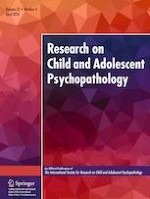16-10-2023
The Relationship Between Emotion Dysregulation and Error Monitoring in Adolescents with ADHD
Gepubliceerd in: Research on Child and Adolescent Psychopathology | Uitgave 4/2024
Log in om toegang te krijgenAbstract
Attention-deficit/hyperactivity disorder (ADHD) is emblematic of the limitations of existing diagnostic categories. One potential solution, consistent with the Research Domain Criteria (RDoC) initiative, is to interrogate psychological mechanisms at the behavioral and physiological level together to try and identify meaningful subgroups within existing categories. Such approaches provide a way to revise diagnostic boundaries and clarify individual variation in mechanisms. Here, we illustrate this approach to help resolve heterogeneity in ADHD using a combination of behaviorally-rated temperament measures from the Early Adolescent Temperament Questionnaire; cognitive performance on three difference conditions of an emotional go/no-go task; and electroencephalogram (EEG)-measured variation in multiple stages of error processing, including the error-related negativity (ERN) and positivity (Pe). In a large (N = 342), well-characterized sample of adolescents with ADHD, latent profile analysis identified two ADHD temperament subgroups: 1) emotionally regulated and 2) emotionally dysregulated (with high negative affect). Cognitive and EEG assessment in a subset of 272 adolescents (nADHD = 151) found that the emotionally dysregulated group showed distinct patterns of change in early neural response to errors (ERN) across emotional task conditions as compared to emotionally-regulated ADHD adolescents and typically-developing controls. Both ADHD groups showed blunted later response to errors (Pe) that was stable across emotional task conditions. Overall, neural response patterns identified important differences in how trait and state emotion interact to affect cognitive processing. Results highlight important temperament variation within ADHD that helps clarify its relationship to the ERN, one of the most prominent putative neural biomarkers for psychopathology.
